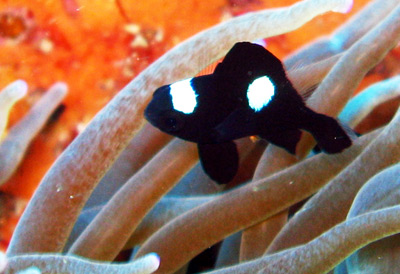As human beings, it’s in our nature to assign certain traits to small animals—cute, dependent, harmless, defenseless, etc. Perhaps we think this way because when it comes to animals, people included, smallness is usually correlated with infancy. However, if applied to marine fish, this type of anthropomorphic thinking can lead to some rather significant compatibility issues in our aquariums.
So let’s dispel a few of the misconceptions we may have with respect to smaller marine fish species:
Small fish are peaceful
While many smaller fish species seem to know they’re vulnerable to predation and bullying by larger fish and so have learned that their best defense is beating a hasty retreat whenever danger threatens, some species apparently never got the memo.
For example, as mentioned in my previous post on humbug damsels, certain damselfish species, including many representatives of the genera Dascyllus and Stegastes, can be explosively belligerent despite their small size, making it very difficult to house them with other fishes (though “Caribbean Chris” claims he can calm dusky damsels into a tonic state and lead them away from the reef like an aquatic Pied Piper by playing soothing tones on a conch shell).
Many of the dottyback species also pack a fairly powerful territorial punch for their size, e.g. the irresistibly colorful royal dottyback (Pictichromis paccagnellae) and the gorgeous magenta dottyback (Pictichromis porphyrea), both of which reach only 2 to 3 inches in length.
Small is a good thing in both of these examples. Any larger and Peter Benchley would have penned a thriller titled Dottybacks or Damsels instead of Jaws!
Small fish are suitable for small tanks
This is true in many instances, but there are notable exceptions. The dwarf angels (Centropyge spp.) come immediately to mind here. Though few of these little dwarfs exceed 5 inches in total length, it’s generally best to keep them in larger quarters for a few reasons:
- They need ample live rock to graze and forage upon, which is impossible to provide in a small system.
- Many of them are surprisingly active and far-ranging. After keeping a flame angelfish (C. loriculus) in my 125-gallon and observing how much ground it could cover in a short period, I can’t imagine trying to constrain all that energy to a small tank.
Anthias are also good examples of relatively small fish that need a decent amount of room, particularly when kept in groups, as they typically need a large open swimming space in addition to ample hiding places.
Small fish are reef-friendly
While somewhat true from the standpoint of being minimal waste producers, not all small fish are to be trusted around sessile invertebrates. Some may nip at and/or eat certain polyps—again, certain Centropyge angels come to mind here, as do some Ecsenius and Salarias spp. blennies.
Others are obligate coral polyp eaters–meaning coral polyps are all that they’ll eat. For example, the harlequin filefish (Oxymonacanthus longirostris) feeds exclusively on the polyps of Acropora spp. corals, making it a poor choice for aquarium keeping in general.
What was your most surprising experience with a small marine fish?
Have you ever kept a small marine fish whose behavior belied it’s diminutive size? If so, please share your experience in the comment section below.



